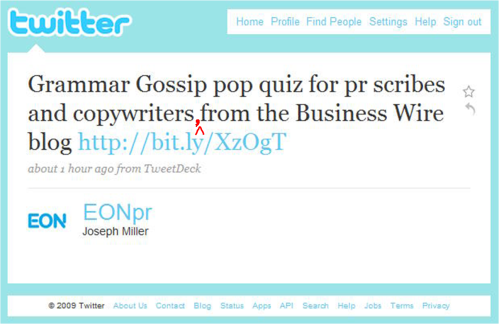Posted in comma clout, craves a comma, tagged article, blog, business, Calmetta Coleman, comma, email, English, important, needed, post, punctuation, required, support, tout, use, Web, writing on June 16, 2009|
1 Comment »
We are always looking for comma clout … we crave instances in which the comma is required, supported, and even touted.
Today, we found another such situation in an article about business writing in email. (click here to read the entire post)
Here are a few excerpts we wish to emphasize:
“1. Use a comma after “Hi” or “Hello” in your greeting. Omitting the comma after the initial greeting in an e-mail (such as “Hi Calmetta”) is so commonplace that it may eventually become standard usage. Until that happens, though, leaving out the comma can send the message right off the bat that the writer does not understand punctuation rules. And that’s the wrong message to send when you’re not sure whether a boss or potential employer is a stickler on writing rules.”
Here is the general guideline: Use commas to set off the name of a person written to in a direct address. (Example: Hi, John.) Note that this greeting is different from “Dear John,” which is often used in writing letters. “Dear John” doesn’t require a comma because “dear” is an adjective – adding a single-word description to the name of the person you are addressing. However, both “Dear John” and “Hi, John” require punctuation after John to set off the name at the beginning of a letter or e-mail. For “Dear John,” use a comma; after “Hi, John,” use either a period or a dash.
And …
“4. Avoid too-casual closings. Ending messages with a standard sign-off such as “See ya” or “Later” can add a touch of your personality when communicating with friends, but play it safer in business e-mails. Opt for a standard complimentary closing such as “Sincerely,” “Respectfully” or “Thanks in advance.” And remember to use a comma after the closing before adding your name on the next line.”
Thanks to Calmetta Coleman of culpwrit.
Read Full Post »

